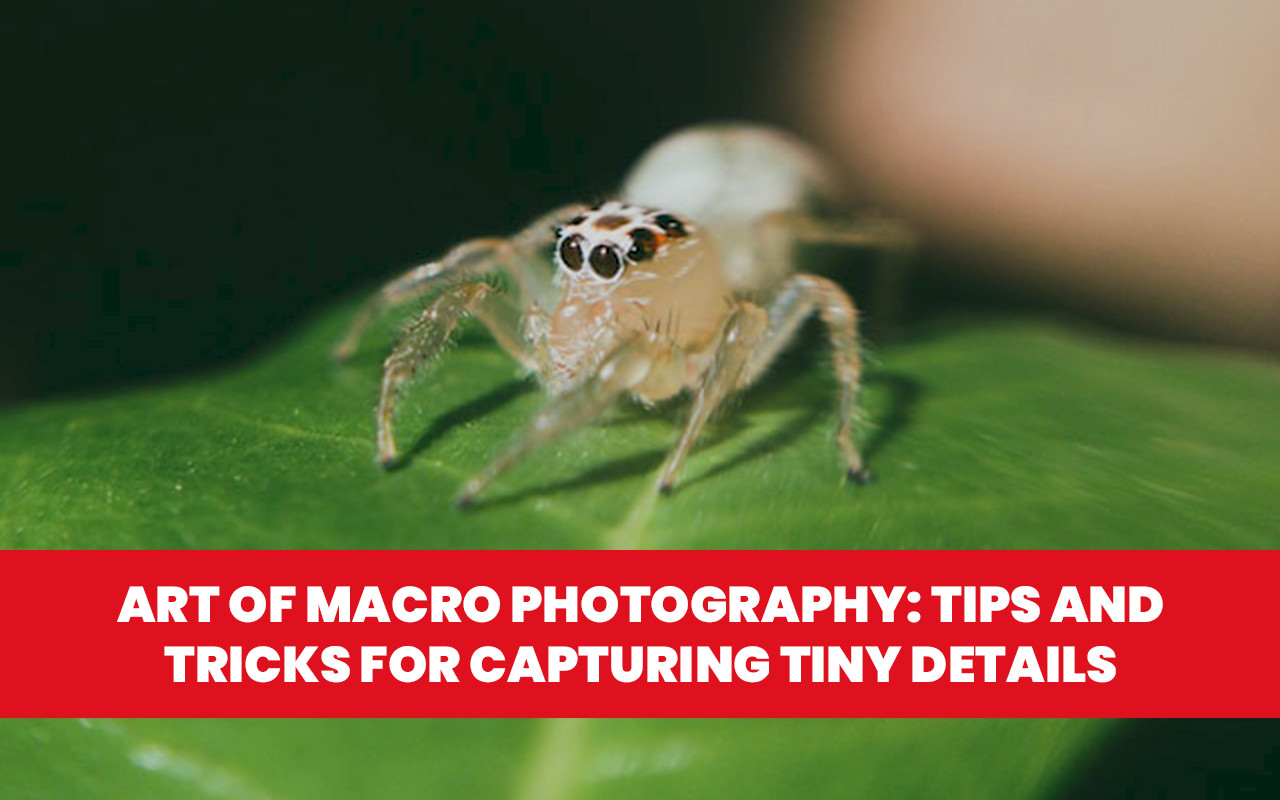Art of Macro Photography: Tips and Tricks for Capturing Tiny Details

Exploring and appreciating the finest details of our world is made possible through macro photography, which is a great art form. Macro photography allows us to enjoy the details of small things, like the patterns on a butterfly's wings or the curves of a flower petal, bringing us into a world of beauty we may not have noticed otherwise. Capturing the small details is difficult. Special equipment and techniques are necessary for this task. This article will explore macro photography in-depth and provide tips and tricks to help you take high-quality, detailed photos like a professional.
Defining Macro Photography
Macro photography involves taking close-up photos of small subjects like insects, flowers, or objects. It is a way of capturing detailed images of these tiny subjects. Actual macro photography involves capturing an issue at a "life-size" or higher magnification, which implies that the matter is either the same size or smaller than your camera sensor.
Be reassured if the concept seems overly technical. You can still capture stunning macro photographs without attaining extremely high magnification. Sometimes, charging a subject slightly larger than its actual size can yield remarkable outcomes.
Tips and Tricks Related to the Macro Photography - A Simpler Guide
How do I begin with macro photography? Here are some tips and tricks that could help you capture small details.
Choose the Right Equipment
To achieve the necessary magnification, it is required to have specialized equipment, such as a macro lens or extension tubes for macro photography. If buying a macro lens is not an option, using extension tubes can be a more cost-effective approach to start macro photography. Using a tripod can help you keep your camera steady and avoid capturing blurry images, so using one is essential.
Play with Aperture
To achieve the desired depth of field when taking macro photos, it is recommended that you try out different aperture settings and experiment with them. A shallow depth of field can separate your subject and generate a lovely bokeh effect, while a deeper depth of field can allow you to capture more of the matter in focus. Read this article to discover how adjusting various camera settings can create unique macro shots and open new photographic opportunities.
Get Creative with Lighting
In photography, good lighting is essential, especially for macro shots. To achieve the ideal lighting for your subject, it might be necessary to utilize external flashes or diffusers. Try various lighting techniques like backlighting and side lighting to create intriguing shadows and highlights. You can manipulate light and capture fascinating close-up photos with multiple styles and choices. Check out this article on Macro Lighting for some suggestions and lighting setups.
Pay Attention to the Composition
Composition is crucial in photography, just like any other form of it. One way to make your images more visually pleasing is using compositional techniques like the rule of thirds. Being mindful of the subject's placement within the frame is crucial.
Practice, and Practice Patience
Although macro photography can be difficult, you can develop a knack for capturing intricate details with practice and patience. Taking risks and trying new approaches is alright, even if your initial efforts don't yield desired results. Try this one if you want to challenge yourself with a macro assignment. Remember to keep practicing to create stunning macro photos that uniquely capture the world's beauty.
Wrapping Up..............
In summary, macro photography is a fantastic form of art that offers us a fresh perspective to admire the magnificence of our surroundings. Applying these tips and tricks will give you a better chance of capturing the small details that can significantly enhance your images. Start your exploration of macro photography today by grabbing your camera.
Frequently Asked Questions (FAQs)
Quick solutions for the most commonly asked queries about Macro Photography are provided below.
Q. What is Macro Art Photography?
Ans. Macro photography takes pictures of small subjects and living organisms, such as insects, from an extremely close distance. The resulting photographs feature issues that appear more prominent than life-size. It is also sometimes referred to as photomacrography or macrography.
Q. Why is Macro Photography Important?
Ans. Macro photography involves capturing close-up shots of small objects, which allows the photographer to appreciate their intricate details and turn ordinary items into extraordinary subjects. In the past, macro photography required specialized equipment, particularly in the days of film.
Q. What are the Different Types of Macro Photography?
Ans. There are three types of focal lengths for macro lenses:
-
short,
-
standard, and
-
telephoto.
Q. What Focus for Macro Photography?
Ans. A macro lens is considered valid if it has a magnification ratio of 1:1 or more and a focusing distance of roughly 30cm. Essentially, this means that the size of your subject on the sensor plane is as big or more significant than the subject itself. This magnification lets you capture highly detailed, up-close shots of small things like insects.